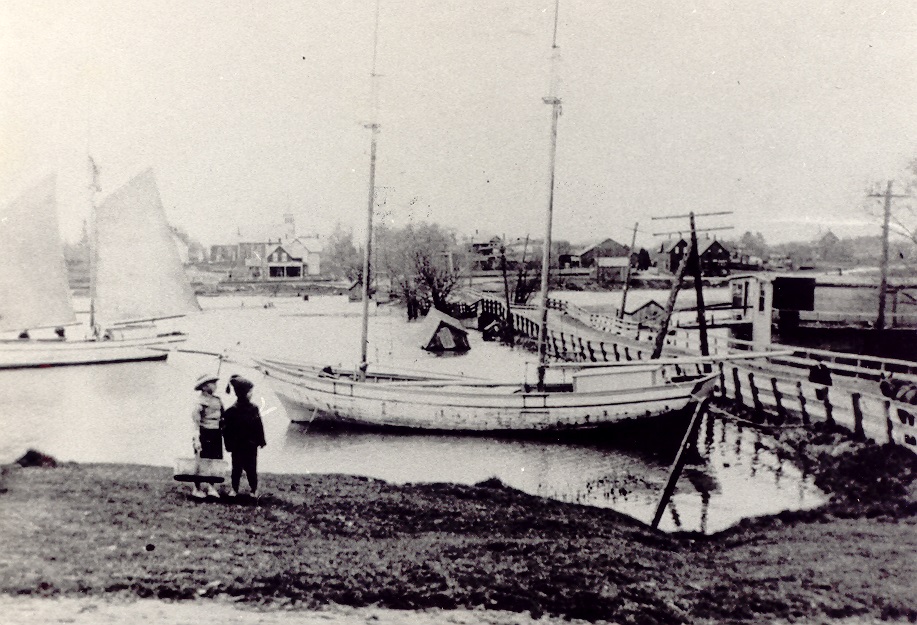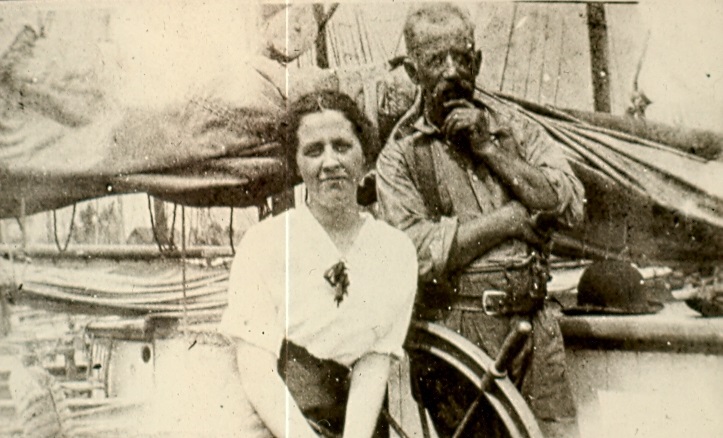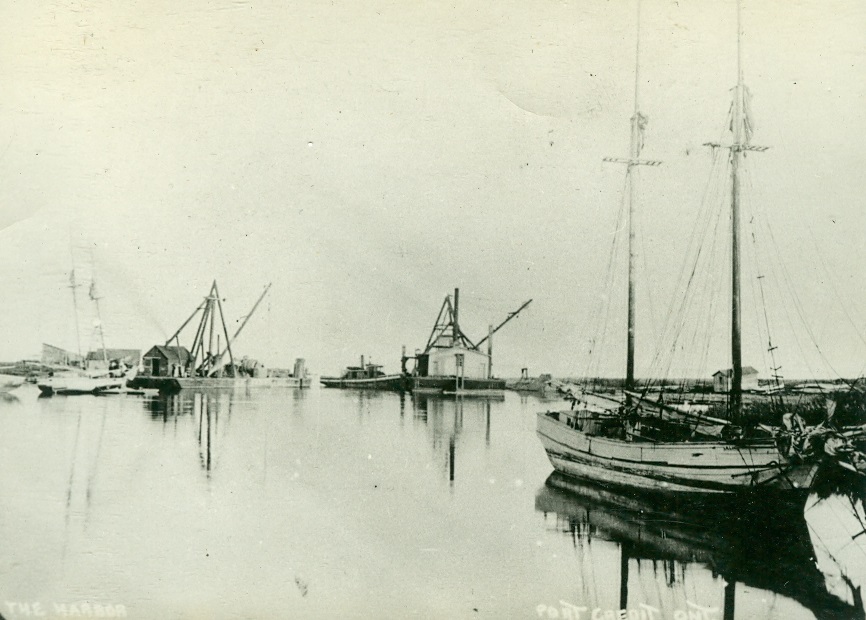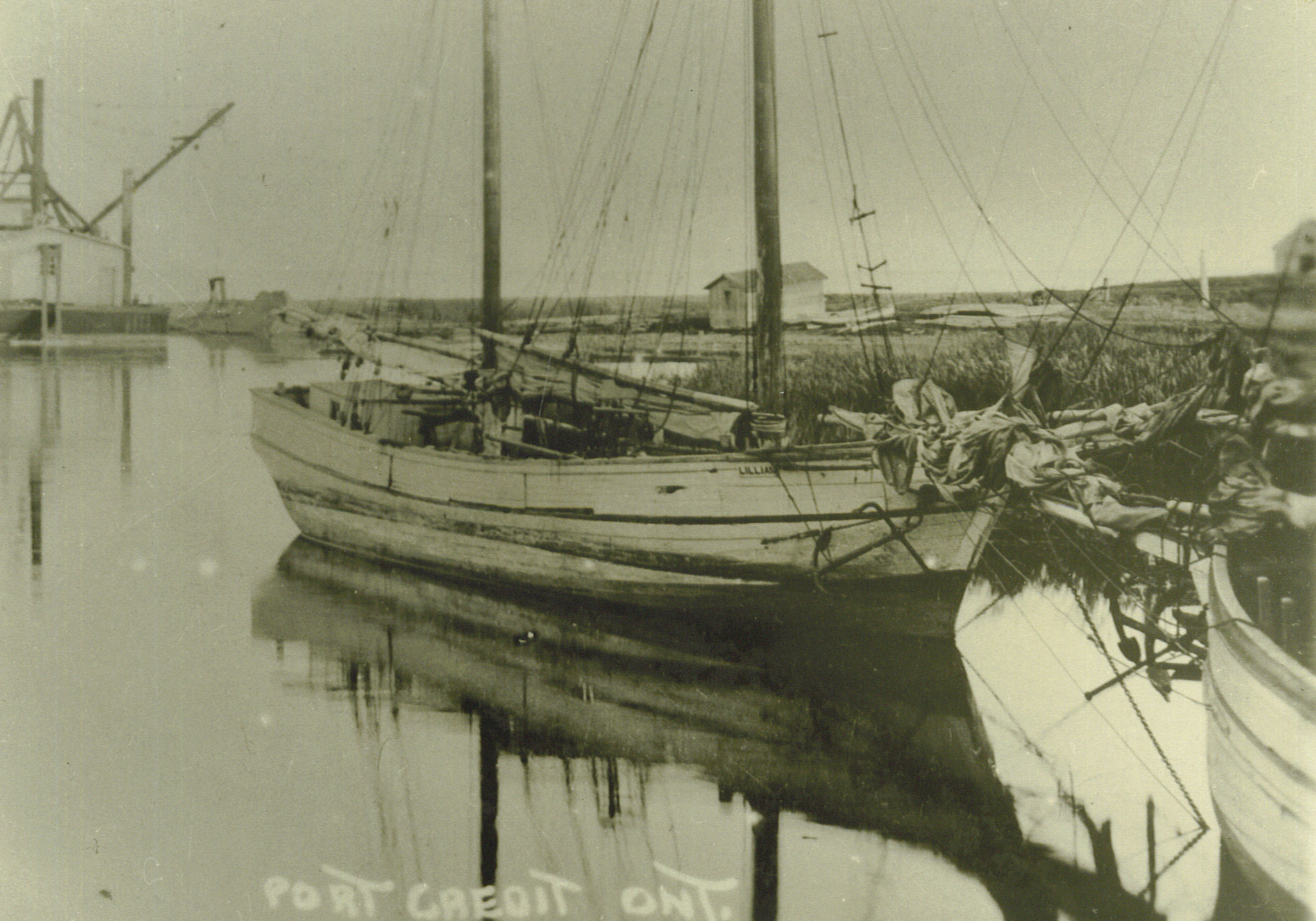EPISODE 320 STONEHOOKING WAS A BRUTAL PROFESSION
![]() heritagemississauga.com/wp-content/uploads/2020/09/Port-Credit-Harbour-Scene-Stonehooker-in-harbour-1908-Harold-Hare-Image-300×204.jpg 300w, heritagemississauga.com/wp-content/uploads/2020/09/Port-Credit-Harbour-Scene-Stonehooker-in-harbour-1908-Harold-Hare-Image-768×523.jpg 768w” sizes=”(max-width: 917px) 100vw, 917px” apple-inline=”yes” id=”55A3C3F0-5013-4CF8-AC66-CE82DC863BC7″ src=”http://alanskeoch.ca/wp-content/uploads/2021/04/Port-Credit-Harbour-Scene-Stonehooker-in-harbour-1908-Harold-Hare-Image.jpeg”>
heritagemississauga.com/wp-content/uploads/2020/09/Port-Credit-Harbour-Scene-Stonehooker-in-harbour-1908-Harold-Hare-Image-300×204.jpg 300w, heritagemississauga.com/wp-content/uploads/2020/09/Port-Credit-Harbour-Scene-Stonehooker-in-harbour-1908-Harold-Hare-Image-768×523.jpg 768w” sizes=”(max-width: 917px) 100vw, 917px” apple-inline=”yes” id=”55A3C3F0-5013-4CF8-AC66-CE82DC863BC7″ src=”http://alanskeoch.ca/wp-content/uploads/2021/04/Port-Credit-Harbour-Scene-Stonehooker-in-harbour-1908-Harold-Hare-Image.jpeg”>
![]() heritagemississauga.com/wp-content/uploads/2020/09/Unknown-People-Stonehookers-of-Port-Credit-300×182.jpg 300w” sizes=”(max-width: 723px) 100vw, 723px” apple-inline=”yes” id=”A89B2CCD-4CB9-4A03-81A7-3DF23D292D45″ src=”http://alanskeoch.ca/wp-content/uploads/2021/04/Unknown-People-Stonehookers-of-Port-Credit-1.jpeg”>
heritagemississauga.com/wp-content/uploads/2020/09/Unknown-People-Stonehookers-of-Port-Credit-300×182.jpg 300w” sizes=”(max-width: 723px) 100vw, 723px” apple-inline=”yes” id=”A89B2CCD-4CB9-4A03-81A7-3DF23D292D45″ src=”http://alanskeoch.ca/wp-content/uploads/2021/04/Unknown-People-Stonehookers-of-Port-Credit-1.jpeg”>
![]() heritagemississauga.com/wp-content/uploads/2020/09/Sailors-Port-Credit-Harbour-with-stonehooking-scow-undated-300×234.jpg 300w” sizes=”(max-width: 641px) 100vw, 641px” apple-inline=”yes” id=”03FF66DA-2E12-4EA4-87C4-8387A4160897″ src=”http://alanskeoch.ca/wp-content/uploads/2021/04/Sailors-Port-Credit-Harbour-with-stonehooking-scow-undated.jpeg”>
heritagemississauga.com/wp-content/uploads/2020/09/Sailors-Port-Credit-Harbour-with-stonehooking-scow-undated-300×234.jpg 300w” sizes=”(max-width: 641px) 100vw, 641px” apple-inline=”yes” id=”03FF66DA-2E12-4EA4-87C4-8387A4160897″ src=”http://alanskeoch.ca/wp-content/uploads/2021/04/Sailors-Port-Credit-Harbour-with-stonehooking-scow-undated.jpeg”>
![]() heritagemississauga.com/wp-content/uploads/2020/09/Port-Credit-Harbour-Stonehooker-Lillian-and-Harbour-Dredge-c1900-300×215.jpg 300w, heritagemississauga.com/wp-content/uploads/2020/09/Port-Credit-Harbour-Stonehooker-Lillian-and-Harbour-Dredge-c1900-768×550.jpg 768w” sizes=”(max-width: 866px) 100vw, 866px” apple-inline=”yes” id=”0119E144-75E4-407C-870C-9869727AB6B1″ src=”http://alanskeoch.ca/wp-content/uploads/2021/04/Port-Credit-Harbour-Stonehooker-Lillian-and-Harbour-Dredge-c1900-1.jpeg”>
heritagemississauga.com/wp-content/uploads/2020/09/Port-Credit-Harbour-Stonehooker-Lillian-and-Harbour-Dredge-c1900-300×215.jpg 300w, heritagemississauga.com/wp-content/uploads/2020/09/Port-Credit-Harbour-Stonehooker-Lillian-and-Harbour-Dredge-c1900-768×550.jpg 768w” sizes=”(max-width: 866px) 100vw, 866px” apple-inline=”yes” id=”0119E144-75E4-407C-870C-9869727AB6B1″ src=”http://alanskeoch.ca/wp-content/uploads/2021/04/Port-Credit-Harbour-Stonehooker-Lillian-and-Harbour-Dredge-c1900-1.jpeg”>
![]() heritagemississauga.com/wp-content/uploads/2020/09/Stone-Hooker-Lillian-Port-Credit-Harbour-c1914-300×210.jpg 300w, heritagemississauga.com/wp-content/uploads/2020/09/Stone-Hooker-Lillian-Port-Credit-Harbour-c1914-1024×717.jpg 1024w, heritagemississauga.com/wp-content/uploads/2020/09/Stone-Hooker-Lillian-Port-Credit-Harbour-c1914-768×538.jpg 768w, heritagemississauga.com/wp-content/uploads/2020/09/Stone-Hooker-Lillian-Port-Credit-Harbour-c1914-1536×1075.jpg 1536w” sizes=”(max-width: 1896px) 100vw, 1896px” apple-inline=”yes” id=”3696DFC0-45ED-4CDC-8053-06DD0A5E1CE6″ src=”http://alanskeoch.ca/wp-content/uploads/2021/04/Stone-Hooker-Lillian-Port-Credit-Harbour-c1914.jpeg”>
heritagemississauga.com/wp-content/uploads/2020/09/Stone-Hooker-Lillian-Port-Credit-Harbour-c1914-300×210.jpg 300w, heritagemississauga.com/wp-content/uploads/2020/09/Stone-Hooker-Lillian-Port-Credit-Harbour-c1914-1024×717.jpg 1024w, heritagemississauga.com/wp-content/uploads/2020/09/Stone-Hooker-Lillian-Port-Credit-Harbour-c1914-768×538.jpg 768w, heritagemississauga.com/wp-content/uploads/2020/09/Stone-Hooker-Lillian-Port-Credit-Harbour-c1914-1536×1075.jpg 1536w” sizes=”(max-width: 1896px) 100vw, 1896px” apple-inline=”yes” id=”3696DFC0-45ED-4CDC-8053-06DD0A5E1CE6″ src=”http://alanskeoch.ca/wp-content/uploads/2021/04/Stone-Hooker-Lillian-Port-Credit-Harbour-c1914.jpeg”>

alan skeoch
april 2021
 heritagemississauga.com/wp-content/uploads/2020/09/Port-Credit-Harbour-Scene-Stonehooker-in-harbour-1908-Harold-Hare-Image-300×204.jpg 300w, heritagemississauga.com/wp-content/uploads/2020/09/Port-Credit-Harbour-Scene-Stonehooker-in-harbour-1908-Harold-Hare-Image-768×523.jpg 768w” sizes=”(max-width: 917px) 100vw, 917px” apple-inline=”yes” id=”55A3C3F0-5013-4CF8-AC66-CE82DC863BC7″ src=”http://alanskeoch.ca/wp-content/uploads/2021/04/Port-Credit-Harbour-Scene-Stonehooker-in-harbour-1908-Harold-Hare-Image.jpeg”>
heritagemississauga.com/wp-content/uploads/2020/09/Port-Credit-Harbour-Scene-Stonehooker-in-harbour-1908-Harold-Hare-Image-300×204.jpg 300w, heritagemississauga.com/wp-content/uploads/2020/09/Port-Credit-Harbour-Scene-Stonehooker-in-harbour-1908-Harold-Hare-Image-768×523.jpg 768w” sizes=”(max-width: 917px) 100vw, 917px” apple-inline=”yes” id=”55A3C3F0-5013-4CF8-AC66-CE82DC863BC7″ src=”http://alanskeoch.ca/wp-content/uploads/2021/04/Port-Credit-Harbour-Scene-Stonehooker-in-harbour-1908-Harold-Hare-Image.jpeg”> heritagemississauga.com/wp-content/uploads/2020/09/Unknown-People-Stonehookers-of-Port-Credit-300×182.jpg 300w” sizes=”(max-width: 723px) 100vw, 723px” apple-inline=”yes” id=”A89B2CCD-4CB9-4A03-81A7-3DF23D292D45″ src=”http://alanskeoch.ca/wp-content/uploads/2021/04/Unknown-People-Stonehookers-of-Port-Credit-1.jpeg”>
heritagemississauga.com/wp-content/uploads/2020/09/Unknown-People-Stonehookers-of-Port-Credit-300×182.jpg 300w” sizes=”(max-width: 723px) 100vw, 723px” apple-inline=”yes” id=”A89B2CCD-4CB9-4A03-81A7-3DF23D292D45″ src=”http://alanskeoch.ca/wp-content/uploads/2021/04/Unknown-People-Stonehookers-of-Port-Credit-1.jpeg”>Stonehooking was a brutal profession. Today, now that the stonehookers are gone
and their ships are rotting hulks at the bottom of Lake Ontario or ground into sawdust or
charcoal by the passage of time and neglect, there is a tendency to romanticize what
was near the bottom of occupations Canadians chose in the 19th and early 20th century.
Just imagine spending your work day wading in water lifting slabs of stone with crowbar
and a hooked rake…piling the stone on a small flat bottomed scow…transferring tons
of stone to a schooner…sailing to Toronto three times a week with 9 to 18 tons of stone
…piling the stone on a rotting pier with raw sewage bubbling up…then getting $10 to $15
…and sailing back to Port Credit with a return load of horse manure. Toronto was a city
with thousands of horses on the streets in 1900.
PORT CREDIT HARBOUR AROUND 1899-1905
(SOURCE Schooner Days 112, Nov. 4, 1933, Port Credit’ Stonehookers)
WHAT DID MOST STONEHOOKERS LOOK LIKE?
The scow model was used all over the Great Lakes, sometimes in vessels of considerable size, but Port Credit scows were a peculiar variant, and the best of them were so designed that they could carry their whole load on deck. This effected a great saving in handling of cargo.
One of the best examples of such a model was the scow Coronet, designed and built by Capt. John Miller, for many years lighthouse keeper at Port Credit. She was 53 feet long and 17 feet beam and four feet deep in the hold; drew 18 inches of water light, with her centerboard up; carried thirty tons of stone on deck, with nothing in the hold but stone-chips for ballast. She sailed and sailed well in this trim, although the load brought her deck within eight inches of the water amidships. She was about three feet higher at each end. Her rig was large, the mainboom projecting outboard for 17 feet, half its length. Her topmasts were long, over thirty feet, and her lower masts comparatively short, so that when she clewed up her topsails it was equivalent to reefing ordinary lower sails. She sank off Port Credit in 1899, when owned by a Bronte
At the other extreme was the smaller schooner, Ann Brown, built in Toronto about 1836 and owned in Port Credit for a half century by Abram Block, senior, and, in turn, Abram Block, junior, Justice of the Peace, who died this summer in his 83rd year. The Ann Brown was not a scow nor a centreboarder. She was a surviving example of the old “standing keel.” She was 36 feet long and 11 feet beam and 6 feet deep in the hold. She drew 6 feet of water when loaded, and carried slightly over twenty tons of stone, most of it in the hold. Tiny as she was she had made voyages as far east as Kingston as as far west as Manitoulin Island, for she was built for the fur-trade with the Indians of the Georgian Bay. She was sailed for many years by Thomas Block, a brother of Abram Block, J.P., and survived until 1904. In her early days she had a square topsail and topgallantsail, although the yards for these sails were so short they could be used for pike-poles.
HOW DID A STONEHOOKER GET ITS LOAD OF STONE?
The stonehooker usually anchored on the lake shore and collected a cargo by sending in a small flat scow, into which loads of stones were gathered from the beach itself or from the bottom, long rakes, with prong-like forks being used for the purpose. Some have thought that these hook-like rakes gave the name to the trade.
Stonehooking was very wet work, the men sometimes wading the shore waist-deep in water, quarrying the stone loose with crowbars, and lifting it on to the small scow, which was usually decked over and water-tight as a wooden bottle.
SMALL FLAT BOTTOMED SCOWS — AND PARENT LARGER SCHOONERS AND SCOWS TO CARRY 9 TONS OF STONE
 heritagemississauga.com/wp-content/uploads/2020/09/Sailors-Port-Credit-Harbour-with-stonehooking-scow-undated-300×234.jpg 300w” sizes=”(max-width: 641px) 100vw, 641px” apple-inline=”yes” id=”03FF66DA-2E12-4EA4-87C4-8387A4160897″ src=”http://alanskeoch.ca/wp-content/uploads/2021/04/Sailors-Port-Credit-Harbour-with-stonehooking-scow-undated.jpeg”>
heritagemississauga.com/wp-content/uploads/2020/09/Sailors-Port-Credit-Harbour-with-stonehooking-scow-undated-300×234.jpg 300w” sizes=”(max-width: 641px) 100vw, 641px” apple-inline=”yes” id=”03FF66DA-2E12-4EA4-87C4-8387A4160897″ src=”http://alanskeoch.ca/wp-content/uploads/2021/04/Sailors-Port-Credit-Harbour-with-stonehooking-scow-undated.jpeg”>When the scow was loaded it was poled or sculled out to the parent stonehooker, and its cargo transferred to her deck and hold. These small scows could carry about a third of a toise, or three tons deadweight. It took from ten to forty scowloads to give the stonehooker her full cargo. Gravel was loaded in the same way, except that it was shoveled from the beach to the deck of the scow, and not gathered with rakes.
The first vessels engaged in the trade were the small coasters, some scows and some schooner-built, which had been in the grain, lumber and cordwood trade while this was profitable for small vessels. It was soon found that the scows were particularly well fitted for carrying stone, and the specialized scow model resulted.
WHY WAS SO MUCH STONE NEEDED?
Stonehooking flourished through the decades while great harbors were being constructed on Lake Ontario, and stone was needed to fill the timber cribs; and while cities were growing and needed building stone for walls, flat stones for sidewalks, cobble stones for pavements, and crushed stone for macadamized roadways
WHY WERE STONEHOOKERS SO SECRETIVE ABOUT THEIR TRADE?
 heritagemississauga.com/wp-content/uploads/2020/09/Port-Credit-Harbour-Stonehooker-Lillian-and-Harbour-Dredge-c1900-300×215.jpg 300w, heritagemississauga.com/wp-content/uploads/2020/09/Port-Credit-Harbour-Stonehooker-Lillian-and-Harbour-Dredge-c1900-768×550.jpg 768w” sizes=”(max-width: 866px) 100vw, 866px” apple-inline=”yes” id=”0119E144-75E4-407C-870C-9869727AB6B1″ src=”http://alanskeoch.ca/wp-content/uploads/2021/04/Port-Credit-Harbour-Stonehooker-Lillian-and-Harbour-Dredge-c1900-1.jpeg”>
heritagemississauga.com/wp-content/uploads/2020/09/Port-Credit-Harbour-Stonehooker-Lillian-and-Harbour-Dredge-c1900-300×215.jpg 300w, heritagemississauga.com/wp-content/uploads/2020/09/Port-Credit-Harbour-Stonehooker-Lillian-and-Harbour-Dredge-c1900-768×550.jpg 768w” sizes=”(max-width: 866px) 100vw, 866px” apple-inline=”yes” id=”0119E144-75E4-407C-870C-9869727AB6B1″ src=”http://alanskeoch.ca/wp-content/uploads/2021/04/Port-Credit-Harbour-Stonehooker-Lillian-and-Harbour-Dredge-c1900-1.jpeg”>It cannot be said that all stonehookers hailed from Port Credit, but all used that harbor, and many of them were owned there. Surprisingly few showed “of Port Credit” on their sterns; partly for the reason that the stonehookers were engaged in warfare with the lakeshore farmers, until the third or fourth generation. The farmers objected to the stone being carried from their beaches, over which they claimed riparian rights.
At one time what was called the “three-rod law” prevailed for the protection of beaches in Halton, Peel and York counties; stonehookers were not allowed to remove stone, sand or gravel from within three perches or 49 1/2 feet, of the water’s edge.
Conditions being such, stonehooker mariners had no great desire to display, for the convenience for prosecutors, the name of the port where they could be found. Many Port Credit stonehookers were registered in Toronto, and had “of Toronto” following their names on the sternboards. Others were “of Hamilton” or “of Oakville.” In some cases stonehookers actually built in Port Credit to appear on the marine registry as having been built in Toronto, where the registration was made.
HOW BIG WAS A STONEHOOKERS CREW?
Stonehookers, even up to a hundred tons burden, were usually sailed by a crew of two; sometimes single-handed. Occasionally three or four went in vessel, especially in the early days, when wages were low. Profits were small then, for stone sold for $5 a toise, and three trips a week for a two-toise hooker, with her crew of two men, was considered very good work. On this account few steam vessels ever appeared in stonehooking; there were only three, the steam barge Chub of Bronte, the Gordon Jerry, a covered scow-brigantine from Port Dover, and the steam scow Maybird of Toronto
HOW WAS THE STONE CARGO PRICED?
As mentioned the stone was sold at 5$ per ‘noise’ each of which weighed 9 tons. Small stonehookers could carry two toise. Three trips a week for
a two person crew. $30 a week or $15 per man. Casual labourers might be taken to Toronto as well or hired where the ships were unloaded … 75 cents a day.
WHAT WAS COST OF LIVING IN 1900 AND THEN 1913 –
-
In 1900, shoppers could buy a 5-pound bag of flour for 12 cents. Round steak was 13 cents a pound, and bacon was a penny more. Eggs were 21 cents per dozen, milk sold for 14 cents per half gallon and butter cost 26 cents per pound.
Between 1913 and 2021: Food experienced an average inflation rate of 3.11% per year. This rate of change indicates significant inflation. In other words, food costing $20 in the year 1913 would cost $546.95 in 2021 for an equivalent purchase.
THE CASH INCENTIVE: WHAT DOES THIS MEAN IN TERMS OF LABOUR?
To earn $15 each man had to hoist 9 tons of stone from the Lake Ontario shore or shallow water. Then transfer 9 tons of stone from the small skiffs to
the parent stonehooker. Easier to load s scow which was deck loaded than a schooner which was hold loaded. Then unload the ship on the Toronto
dock ad piked in 9 ton units of stone…i.e. the Toise. There were many larger stonehookers capable of carrying several noise of stone.
WAS PORT CREDIT HARBOUR AND SHIP BUILDING EXCLUSIEVELY FOR STONEHOOKERS?
While much of the harbour was used by stonehooers there were also commercial fishing boats and a ship building industry.
Besides the stonehookers mention, several larger sailing vessels were built and owned in Port Credit, such as the schooners Maggie Hunter, Minnie Blakely, Margaret, Caledonia, and the brigantine Credit Chief and British Queen
DANGEROUS TIMES: THE PINTA DISASTER
 heritagemississauga.com/wp-content/uploads/2020/09/Stone-Hooker-Lillian-Port-Credit-Harbour-c1914-300×210.jpg 300w, heritagemississauga.com/wp-content/uploads/2020/09/Stone-Hooker-Lillian-Port-Credit-Harbour-c1914-1024×717.jpg 1024w, heritagemississauga.com/wp-content/uploads/2020/09/Stone-Hooker-Lillian-Port-Credit-Harbour-c1914-768×538.jpg 768w, heritagemississauga.com/wp-content/uploads/2020/09/Stone-Hooker-Lillian-Port-Credit-Harbour-c1914-1536×1075.jpg 1536w” sizes=”(max-width: 1896px) 100vw, 1896px” apple-inline=”yes” id=”3696DFC0-45ED-4CDC-8053-06DD0A5E1CE6″ src=”http://alanskeoch.ca/wp-content/uploads/2021/04/Stone-Hooker-Lillian-Port-Credit-Harbour-c1914.jpeg”>
heritagemississauga.com/wp-content/uploads/2020/09/Stone-Hooker-Lillian-Port-Credit-Harbour-c1914-300×210.jpg 300w, heritagemississauga.com/wp-content/uploads/2020/09/Stone-Hooker-Lillian-Port-Credit-Harbour-c1914-1024×717.jpg 1024w, heritagemississauga.com/wp-content/uploads/2020/09/Stone-Hooker-Lillian-Port-Credit-Harbour-c1914-768×538.jpg 768w, heritagemississauga.com/wp-content/uploads/2020/09/Stone-Hooker-Lillian-Port-Credit-Harbour-c1914-1536×1075.jpg 1536w” sizes=”(max-width: 1896px) 100vw, 1896px” apple-inline=”yes” id=”3696DFC0-45ED-4CDC-8053-06DD0A5E1CE6″ src=”http://alanskeoch.ca/wp-content/uploads/2021/04/Stone-Hooker-Lillian-Port-Credit-Harbour-c1914.jpeg”>The Pinta, commonly known as the “Pinty,” was a scow, built for S. H. Cotton at Port Nelson in 1869, She was 58 feet on deck, 14 feet 4 inches beam, and 4 feet 8 inches deep, … Her end was tragic. Coming down from Oakville one cold morning, with a nor’west wind hoofing her along, she tried to go about and stand in for the land off Marigold’s Point, the wind following its usual practice at that point by hauling to the north.
The Pinta had a big barndoor centreboard. The box was open slotted and came above the deck. The board was new and buoyant. It should have been ballasted until it was sufficiently waterlogged to sink of its own weight. When the snow squall struck the Pinta she luffed and got in irons, and as she lost way her board rose so high in the box that it caught the foreboom and would not let the foresail come over. That doomed her. A second puff caught her canvas aback and rolled her over. Men who were shingling a barn on Marigold’s Point saw her in trouble. She was blotted out by the snow flurry. When it disappeared she had disappeared too.
“She was loaded too deep, ” said Captain Block. “I guess her hatches just filled when she tried to go about.” All hands were lost, although one man managed to get into the scow towing astern. The offshore wind carried him across the lake and the scow was picked up on the beach at Winona, his frozen body jammed under the thwarts.
From Port Credit harbor, a tug was seen going up the lake in a futile attempt to render assistance. It was the Mixer, a Toronto boat owned by Frank Jackman. And Port Credit
sailors still curse the well meant action of the men on Marigold’s Point, who saw the disaster and hastened word to Toronto, when the schooner Morning Star, sound and almost new, with Abe Block and half a dozen others right there to handle her, lay at the dock in Port Credit ready to put out at a minute’s notice hours nearer the disaster in those pre-telephone times.
It was not until next day that word of the foundering of the “Pinty” reached Port Credit. The victims of the tragedy were William and Joseph Quinn of Oakville, brothers of the owner, Capt. James Quinn, and Bus Howell. Capt. Jas. Quinn and Capt. Mark Blow had left the Pinta some time before her fatal voyage. Oakville sailors had begged the younger mariners not to make a start, for the north wind threatened snow before they left.
Twenty years later, in 1902, the Wood Duck sailed over the sunken wreck of the Pinta off Marigold’s Point. Her fatal centreboard box was still discernible down in the clear green water amid the remains
THE REINDEER WAS THE ‘SWEETHEART OF THE STONEHOOKERS”
(IMAGINE: 44 foot planks cut from local white pine trees)

But the Reindeer was the sweetheart of the stonehookers. She was not so when she was bought from Billy Bond, of Oakville, and brought to Port Credit, under the name Ida May, but she was rebuilt by Captain Mark Blower and Captain Block. She was “getting tender,” so they went over her from stem to stern.
When she entered the water again her sides had been widened, and she had a beautiful spoon bow and springy sheer that were not there before. The remarkable thing, however, was her new planking. Forty-four feet in length was the boat, and the planks ran all the way in one piece. Beautiful 44-foot lengths of clear pine they were. Captain Abe wanted to rechristen her “Buttress” on that account, but Captain Mark preferred Reindeer, and Reindeer it was.
The job of getting pine planks 44 feet in length can be imagined, but Captain Abe dismisses it casually. The operation, as explained by him, consisted of picking the tree you wanted, felling and trimming it, and hauling it to the slip. Then you hauled it upright with the aid of a three-legged derrick, marked it off into planks, and let brawny arms and a whipsaw do the rest, cutting clean from top to bottom. Clear planks 50 and 60 feet in length were not out of the way, says Captain Abe.
With the Olympia and the Coral, the Reindeer ended her days laid up in the Credits and after the Great War was finally broken up by order of the village council.
Alan Skeoch
Credit: Snider, Schooner Days, 48 and 112, 1933
